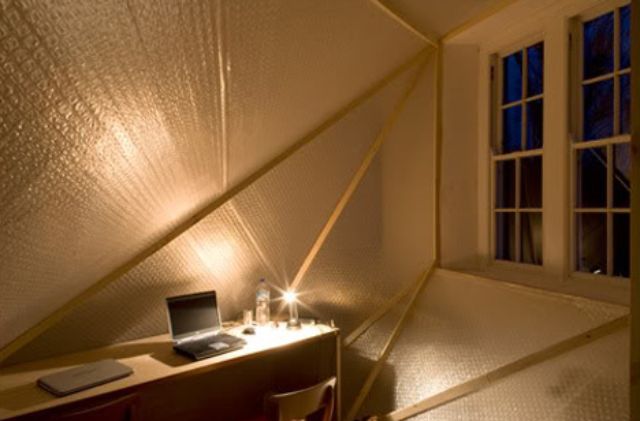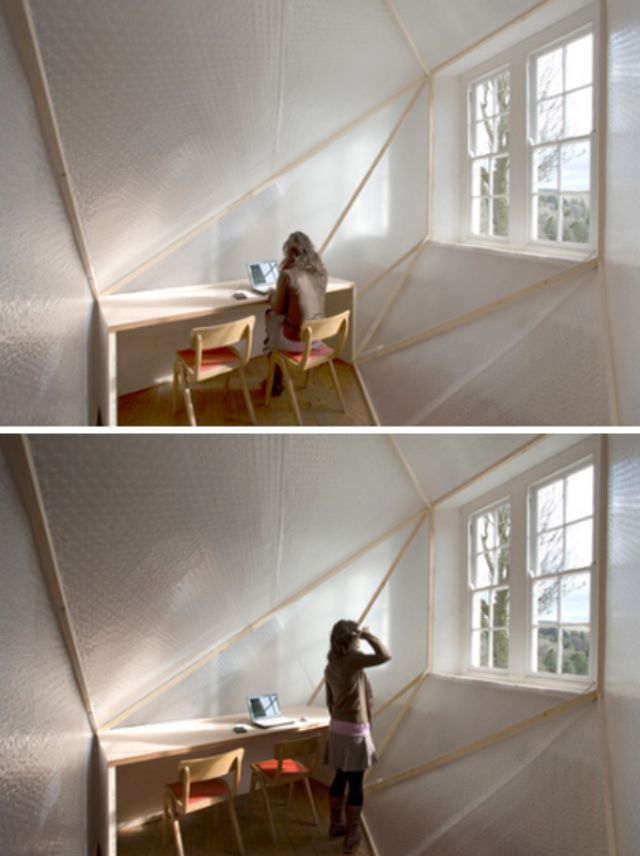Modular Home Office Pod Made of Bubble Wrap

Despite its offbeat appearance, this home office design idea by Davidson Rafailidis is more about function than form – selective insulation of spaces to minimize wasted energy without compromising on creature comforts, creating a balance within a larger area for small-space living. The result is a workspace that would perform equally well for an at-home professional on a budget or a working artist with variable spatial needs.

The idea is simple: only partition what you need and thus save on space that requires heating or cooling by controlling the temperature only within the occupied portions of the room. A wooden framework supports greenhouse-grade insulating bubble wrap and connects key nodes such as doors and windows to a core heated or cooled space.

This modular office space solution is nothing if not timely in terms of the environmental movement and fluctuating state of the global economy. The contemporary employment scene is anything but stable, so why not save money, do your part in going green and flexibly use only the space you need to for work purposes?
“Selective Insulation is an artist’s studio in Hexham England. The enclosure is a response to the chilly working conditions in the Old School House, an artist’s facility. In the Fall, Winter and early Spring, the uninsulated building, a masonry construction built in 1849, requires intensive heating in order to keep it thermally comfortable. Although a central heating system was installed in the building in the 1970‘s, the heating costs are prohibitively high and the system is rarely used.”
“A conventional approach to improving the buildings thermal efficiency would be to line the inside of the stone walls with a new layer of insulation. This approach would lose all potential thermal mass in the stone and create an equally distributed warm zone in the interior. In this project, we asked the question, ‘Can insulating a building be more strategic? Can it have formal consequences? Can it organize space?’ Selective Insulation defines small areas in a building that need to be warm during the cold months of the year. The results are warm “pockets” within existing uninsulated spaces of a building.”




